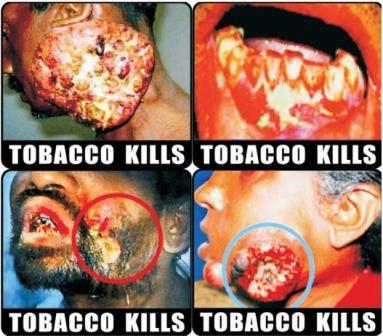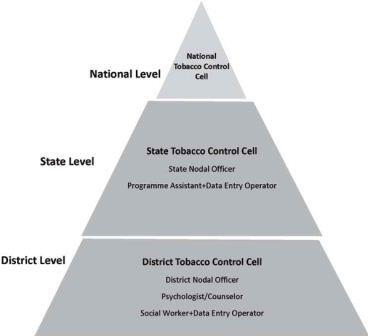National Tobacco Control Programme
National Tobacco Control Programme
Introduction
Tobacco use is one of the main risk factors for a number of chronic diseases, including cancer, lung diseases, and cardiovascular diseases. India is the 2nd largest producer and consumer of tobacco and a variety of forms of tobacco use is unique to India. Apart from the smoked forms that include cigarettes, bidis and cigars, a plethora of smokeless forms of consumption exist in the country.
The Government of India has enacted the national tobacco-control legislation namely, “The Cigarettes and other Tobacco Products (Prohibition of Advertisement and Regulation of Trade and Commerce, Production, Supply and Distribution) Act, 2003” in May, 2003. India also ratified the WHO-Framework Convention on Tobacco Control (WHO-FCTC) in February 2004. Further, in order to facilitate the effective implementation of the Tobacco Control Law, to bring about greater awareness about the harmful effects of tobacco as well as to fulfill the obligations under the WHO-FCTC, the Ministry of Health and Family Welfare, Government of India launched the National Tobacco Control Programme (NTCP) in 2007- 08 in 42 districts of 21 States/Union Territories of the country.
Currently, the Programme is being implemented in all States/Union Territories covering over 600 districts across the country.
Objectives
- To bring about greater awareness about the harmful effects of tobacco use and Tobacco Control Laws.
- To facilitate effective implementation of the Tobacco Control Laws.
- The objective of this programme is to control tobacco consumption and minimize the deaths caused by it. The various activities planned to control tobacco use are as follows:
- Training and Capacity Building
- IEC activity
- Monitoring Tobacco Control Laws and Reporting
- Survey and Surveillance
Coverage
National Tobacco Control Programme is being implemented in about 612 districts in all States/UTs presently.
To view the State-wise list with Districts under NTCP, click here
Harmful effects of smoking and Second hand Smoke Exposure

Harmful effects of using smokeless tobacco

Implementation
NTCP is implemented through a three-tier structure, i.e.
- National Tobacco Control Cell (NTCC) at Central level
- State Tobacco Control Cell (STCC) at State level &
- District Tobacco Control Cell (DTCC) at District level. There is also a provision of setting up Tobacco Cessation Services at District level.

Benefits of quitting tobacco
- In 8 hours: Oxygen levels return to normal.
- In 24 hours: Risk of heart attack begins to decrease.
- In 72 hours: Lung function improves.
- In 1-9 months: Coughing and shortness of breath decreases.
- In 12 months: Risk of heart disease is half as compared to tobacco user.
- In 5 years: Stroke risk is reduced.
- In 10 years: Risk of lung cancer is less than half as compared to tobacco user.
- In 15 years: Risk of heart disease is similar to a person who never smoked.
- Reduced risk of diseases attributable to tobacco use
- Reduced health care expenditure means more money for other essential expenditures
- You become a role model for your children as well as for your society
Major Achievements
- The prevalence of tobacco use has reduced by six percentage points from 34.6% to 28.6% during the period from 2009-10 to 2016-17. The number of tobacco users has reduced by about 81 lakh (8.1 million).
- The Government launched the National Tobacco Cessation Quitline Services (1800-112-356) which aims to guide tobacco addicts to quit tobacco.
- Large specified health warnings on tobacco products covering 85% on both side of the principal display area of tobacco product packs and inclusion of Quitline Number (1800112356) in the specified health warnings for creating awareness among tobacco users, and give them access to counseling services to effect behavior change.
- 'mCessation' initiative is being supported by Ministry to support tobacco users towards successful quitting through text-messaging via mobile phones (011 22901701).
- Regulation of the use of Cigarettes and other tobacco products in films and TV programmes.
- Acceded to the Protocol to Eliminate Illicit Trade in Tobacco Products under the Article 15 of WHO FCTC.
- Issued an Advisory to ban Electronic Nicotine Delivery System (ENDS) including e-Cigarettes, Heat-Not-Burn devices, Vape, e-Sheesha, e-Nicotine Flavoured Hookah, and the like devices that enable nicotine delivery except for the purpose & in the manner and to the extent, as may be approved under the Drugs and Cosmetics Act, 1940 and Rules made thereunder.
- Established three National Tobacco Testing Laboratories
- Enacted The Prohibition of Electronic Cigarettes (Production, Manufacture, Import, Export, Transport, Sale, Distribution, Storage and Advertisement) Act, 2019
Source: National Health Mission
निमणे सुदारीत : 5/26/2020
The Article provides information about Antioxidant...
This topic deals with information related to Anxie...
This topic provides information about Sim Card Swa...
This topic deals with information related to Appen...
